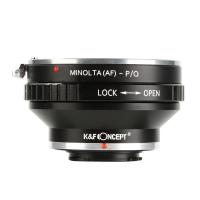Can You See Atoms With A Microscope ?
No, atoms cannot be directly seen with a traditional optical microscope due to their extremely small size. The resolution of an optical microscope is limited by the wavelength of visible light, which is much larger than the size of an atom. However, there are advanced techniques such as scanning tunneling microscopy and atomic force microscopy that can indirectly visualize atoms by detecting their interactions with a probe tip. These techniques rely on the principles of quantum mechanics and use a variety of methods to create images of atomic surfaces or manipulate individual atoms.
1、 Atomic Force Microscopy: Visualizing atoms using a specialized microscope.
Can you see atoms with a microscope? The answer is yes, but not with a conventional light microscope. Atoms are much smaller than the wavelength of visible light, making them impossible to directly observe using traditional microscopy techniques. However, with the advent of advanced technologies, scientists have developed specialized microscopes that can visualize atoms.
One such technique is Atomic Force Microscopy (AFM), which allows for the imaging of atoms and molecules at an unprecedented level of detail. AFM works by scanning a tiny probe tip over the surface of a sample, measuring the forces between the tip and the atoms or molecules on the surface. These measurements are then used to construct a high-resolution image of the sample.
AFM has revolutionized the field of nanoscience and has provided valuable insights into the atomic and molecular world. It has been used to study a wide range of materials, including metals, semiconductors, polymers, and biological samples. AFM has also been instrumental in advancing our understanding of surface properties, such as roughness, adhesion, and friction.
The latest advancements in AFM technology have further improved its capabilities. For example, the development of dynamic AFM modes allows for the visualization of atomic-scale dynamics, such as chemical reactions and molecular motion. Additionally, the integration of AFM with other techniques, such as scanning tunneling microscopy, has enabled even more precise imaging and characterization of atomic structures.
In conclusion, while atoms cannot be seen with a conventional light microscope, Atomic Force Microscopy has made it possible to visualize atoms and molecules with remarkable detail. This technique has greatly contributed to our understanding of the nanoscale world and continues to push the boundaries of scientific exploration.

2、 Scanning Tunneling Microscopy: Imaging atoms through electron tunneling.
Scanning Tunneling Microscopy (STM) is a powerful technique that allows scientists to image atoms and molecules at the atomic scale. It was developed in the early 1980s and has since revolutionized our understanding of the nanoworld. So, the answer to the question "can you see atoms with a microscope" is a resounding yes, thanks to STM.
STM works by scanning a sharp metal tip over a sample surface, while maintaining a small distance between the tip and the surface. A small voltage is applied between the tip and the surface, which allows electrons to tunnel between them. By measuring the tunneling current, scientists can create a topographic map of the surface with atomic resolution.
The ability of STM to image atoms has been confirmed through numerous experiments and has been widely accepted in the scientific community. It has provided invaluable insights into the structure and behavior of materials at the atomic level. STM has been used to study a wide range of materials, including metals, semiconductors, and even individual molecules.
However, it is important to note that STM is limited to conducting or semiconducting materials. It cannot be used to directly image non-conductive materials like insulators or biological samples. In recent years, advancements in microscopy techniques, such as atomic force microscopy (AFM), have allowed for the imaging of non-conductive materials with atomic resolution.
In conclusion, while traditional optical microscopes cannot see atoms, STM has revolutionized our ability to visualize and manipulate individual atoms and molecules. It has opened up new avenues for scientific research and has greatly contributed to our understanding of the nanoworld.

3、 Transmission Electron Microscopy: Capturing atomic-scale images using electron beams.
Transmission Electron Microscopy (TEM) is a powerful technique that allows scientists to capture atomic-scale images using electron beams. With TEM, it is indeed possible to see atoms, as well as their arrangement and interactions within a material. This technique has revolutionized our understanding of the atomic world and has been instrumental in various fields of science, including materials science, nanotechnology, and biology.
TEM works by passing a beam of electrons through a thin sample, which interacts with the atoms in the material. The electrons are then focused onto a fluorescent screen or a digital detector, creating an image that reveals the atomic structure. By carefully controlling the electron beam and using advanced imaging techniques, scientists can achieve resolutions down to the atomic level.
However, it is important to note that seeing individual atoms with a microscope is not as straightforward as observing larger objects. The resolution of a microscope is limited by the wavelength of the probing particles or waves. In the case of light microscopes, the wavelength of visible light restricts the resolution to a few hundred nanometers, preventing direct observation of atoms. TEM, on the other hand, uses electrons with much shorter wavelengths, allowing for atomic-scale imaging.
It is worth mentioning that recent advancements in TEM technology have further pushed the boundaries of atomic imaging. Techniques such as aberration correction and high-resolution electron microscopy have significantly improved the resolution and clarity of atomic-scale images. These advancements have enabled scientists to study materials and biological samples with unprecedented detail, leading to new discoveries and insights.
In conclusion, while traditional light microscopes cannot directly observe atoms, Transmission Electron Microscopy has made it possible to capture atomic-scale images using electron beams. This technique has revolutionized our understanding of the atomic world and continues to push the boundaries of what we can see and study at the atomic level.

4、 Scanning Electron Microscopy: Examining surface structures at high magnification.
Scanning Electron Microscopy (SEM) is a powerful technique used to examine surface structures at high magnification. However, it is important to note that SEM does not directly visualize individual atoms.
The resolution of a microscope is determined by the wavelength of the radiation used to image the sample. Visible light microscopes, for example, have a resolution limited by the wavelength of visible light, which is around 400-700 nanometers. This means that they cannot resolve objects smaller than this size. Atoms, being on the scale of picometers (10^-12 meters), are far too small to be directly observed using visible light microscopy.
On the other hand, SEM uses a beam of electrons instead of light to image the sample. Electrons have much shorter wavelengths than visible light, allowing for higher resolution imaging. SEM can achieve resolutions on the order of nanometers, making it possible to observe surface structures in great detail.
However, even with its high resolution, SEM still cannot directly visualize individual atoms. The images produced by SEM are based on the interaction of the electron beam with the sample's surface. The electrons scatter off the surface, and the resulting signals are detected and used to generate an image. While this provides valuable information about the surface topography and composition, it does not allow for direct visualization of individual atoms.
In recent years, there have been advancements in microscopy techniques such as aberration-corrected transmission electron microscopy (TEM) and scanning tunneling microscopy (STM) that have pushed the limits of atomic resolution imaging. These techniques have allowed scientists to directly visualize individual atoms and even manipulate them. However, these methods are highly specialized and not commonly used in routine microscopy.
In conclusion, while SEM is a powerful tool for examining surface structures at high magnification, it does not have the capability to directly visualize individual atoms. To observe atoms, more specialized techniques such as TEM or STM are required.






































